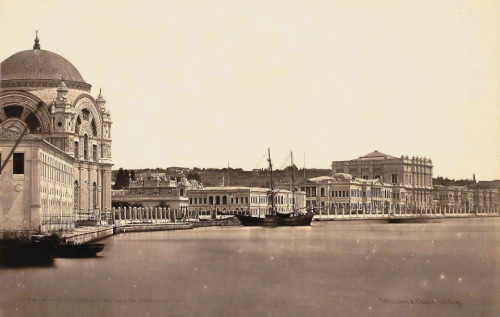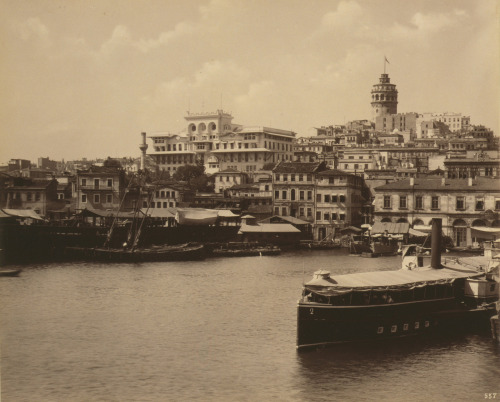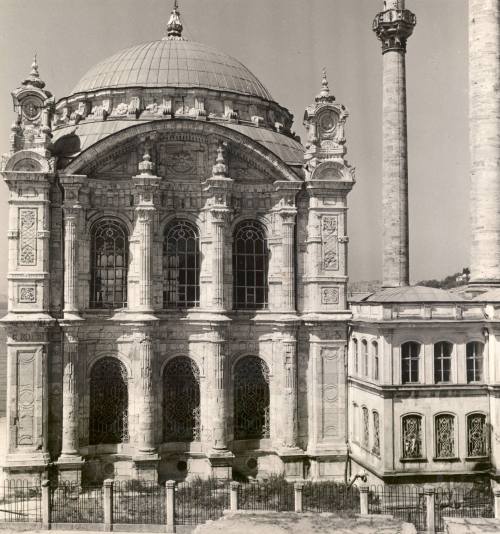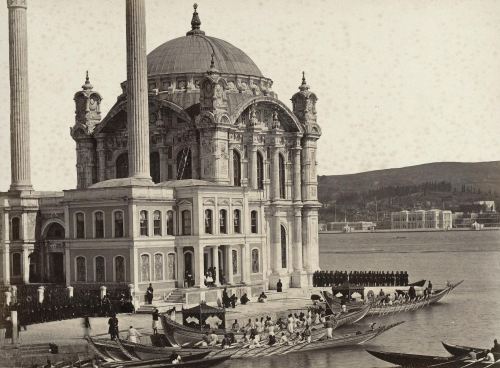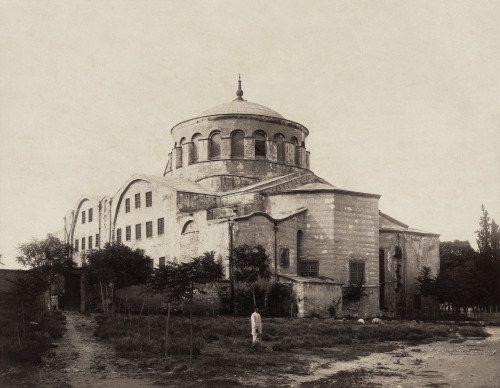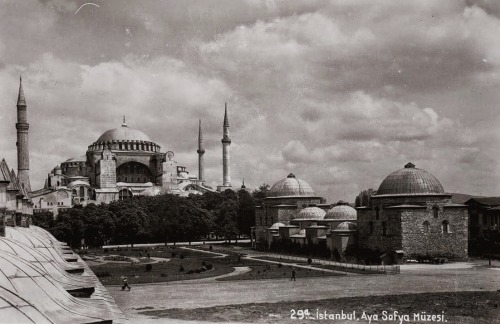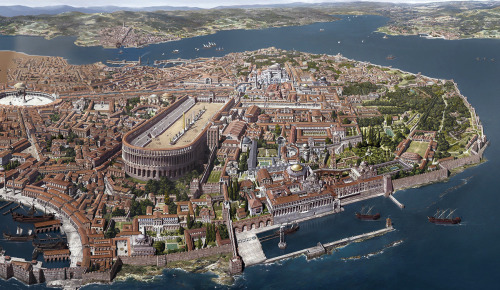#constantinople
Dolmabahce Mosque and Palace. The Dolmabahçe Mosque is adorned with various items of both Baroque and Ampir styles, which are reflected in the architectural design of that period. Also, an emergent architectural modernity in the mosque is its circular window design. Such a design had rarely been seen in mosques and civil architecture before this time. The mosque has two fluted minarets, similar to Corinthian column heads with a single balcony. In addition, the forecourt of the mosque, which was also seen in other imperial mosques (selatin cami) and the fountain were torn down during road construction works. Also, the muvakkithane (time keeping room) was carried to the seaside.
The Dolmabahçe Mosque not only reflects the architectural style of the period during which was built, but also showcases a very distinctive architectural style with its circular window design which had not ever been used in mosque architecture until this time.
Post link
View of Galata from the GoldenHorn. The Ottoman Imperial Bank looms above. By Abdullah Freres c. 1880-1893
Post link
The famous Ortaköy Mosque, located on the coastal pier square, was originally built in the 18th century. Later, in the 19th century, the current mosque, ordered by Sultan Abdülmecid I and designed by architects (father and son) Garabet Amira Balyan and Nigogayos Balyan in Neo-Baroque style, was edificed between 1854 and 1856.
Post link
SULTAN MEHMED V In The Ortaköy Mosque For Friday Prayer.
The famous Ortaköy Mosque, located on the coastal pier square, was originally built in the 18th century. Later, in the 19th century, the current mosque, ordered by Sultan Abdülmecid I and designed by architects (father and son) Garabet Amira Balyan and Nigogayos Balyan in Neo-Baroque style, was edificed between 1854 and 1856.
Post link
The city of Constantinople is at a geographic crossroads, straddling Europe and Asia Minor, and is divided by a sea lane called the Bosphorus Strait, which joins the Black Sea in the northeast and the Mediterranean Sea in the southwest. This strait has played a key role in the history of the city.
Post link
Gazanfer Ağa Madrasa is located between Unkapanı and the Women’s Bazaar, next to the Bozdoğan Aqueduct. It was built by architect Davut Ağa on the order of Gazanfer Ağa, the main custodian of Sultan Mehmed III in the 16th century. The complex, comprised a madrasa, a tomb, a fountain, and a graveyard that was added later. This group of buildings provides an early example of a complex that was designed with a basic architectural program, a popular approach in the 16th and 17th centuries.
Post link
The Haghia Eirene or Hagia Irene (Aya İrini Kilisesi) is a former Orthodox church and the first church built in Constantinople. It is also the only church that was not turned into a mosque after the Ottomans conquered Istanbul in 1453. The Haghia Eirene served as the church of the Patriarchate before the Hagia Sophia was completed in 537.
Post link
Haseki Hürrem Sultan Hammam is located between Hagia Sophia and the Blue Mosque. It was built on the order of Hürrem Sultan, the wife of Süleyman the Magnificent, by Architect Sinan in 1556 as a charitable work. The facade is composed in classical Ottoman style. The interior comprises double baths and is in total 75 meters long. Unusually the female and male baths were located on the same axis, and this is one of the first examples of such a layout in Turkish hammam architecture. The building functioned as a bath until 1910, after which it was closed for a period and then used as a warehouse. Restored in 1957-1958, the building was converted into a carpet store. Its final renovation begun in 2008 and the building opened as a bath house again in 2011.
Post link
HAGIA SOPHIA II
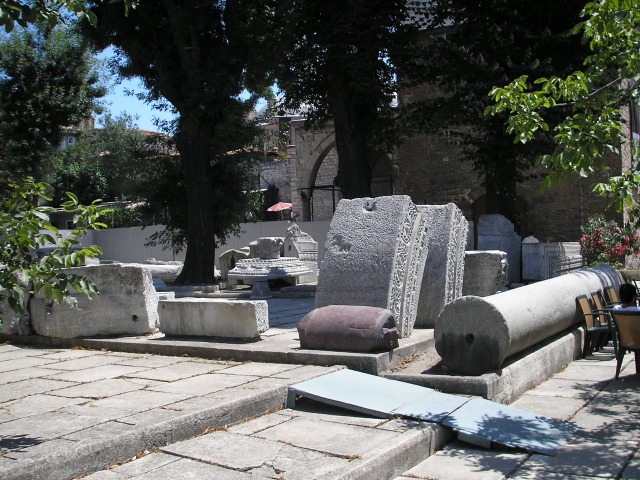



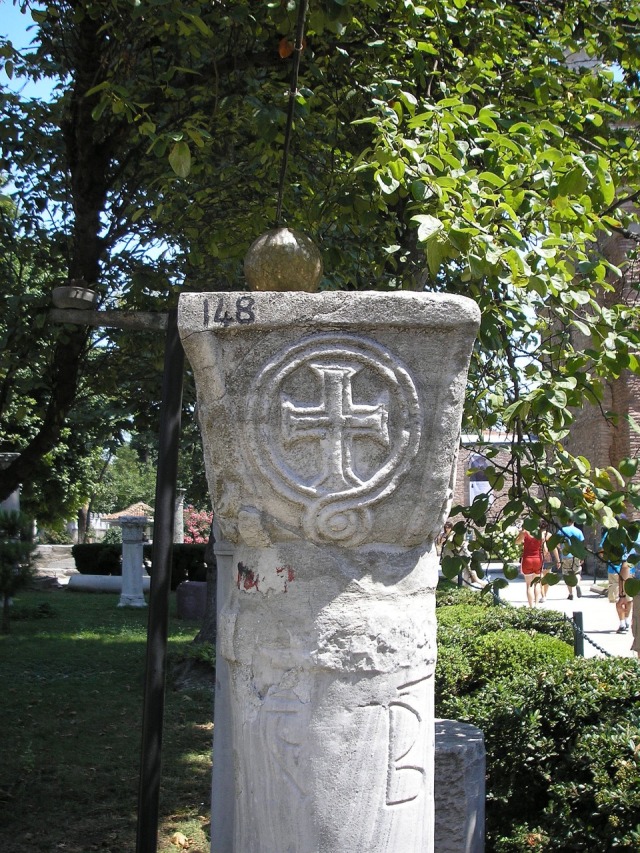

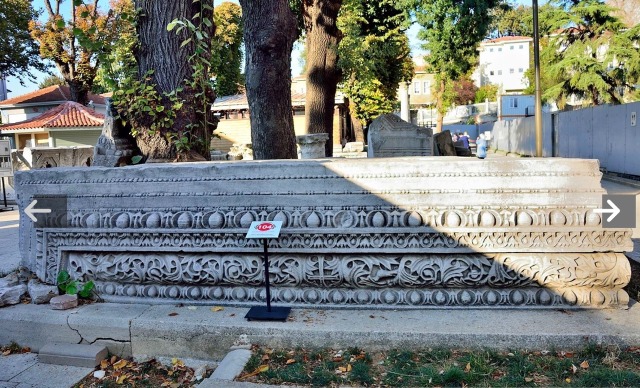

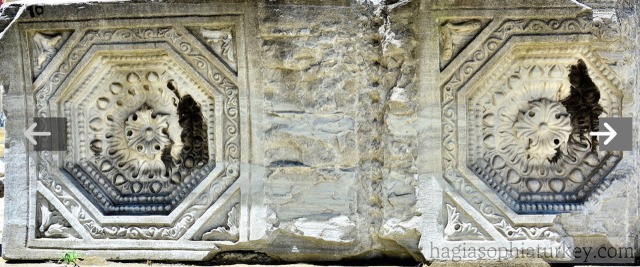

Theodosius II rebuilt the principal church of Constantinople in AD 415 after fires in 402 and 412 had destroyed the original structure founded by Constantine. The church was dedicated to Holy Wisdom—Hagia Sophia (Αγία Σοφία). Little is known about the church of Theodosius other than it was basilican in form, had a timber roof, and was preceded by a spacious atrium. The name of the architect, Rufinus, is preserved.
Some architectural remains of the monumental western façade were excavated in 1935. These richly decorated fragments were part of a porch consisting of an arcuated pediment carried by corinthian capitals and a coffered barrel vault. The lintel frieze depicts 12 lambs which symbolize the 12 apostles.
The Theodosian foundation was burned to the ground in AD 532 during the Nika Riots. Justinian I rebuilt the current church of Hagia Sophia on the same site in a record 5 years. The stark contrast in styles and building techniques between the two monuments indicates that the transition from early Christian to Byzantine architecture had been completed.

Under restoration
Hagia Sophia, Istanbul, 2010



